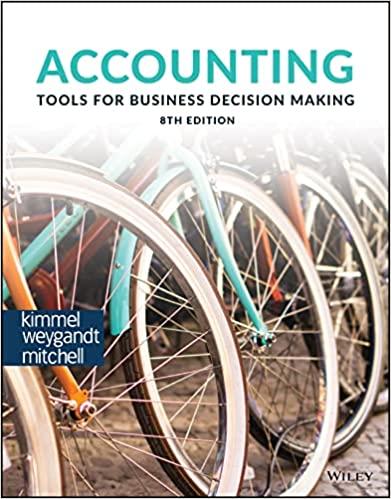Question
History In 2006, after graduating with a business administration degree with a major in finance from the Ivey Business School (at Western University), Gavidia worked
History
In 2006, after graduating with a business administration degree with a major in finance from the Ivey Business School (at Western University), Gavidia worked as a financial analyst for Richardson Partners Financial Limited and then as a business analyst for CIBC Wealth Management. Dineda completed her undergraduate degree at the University of Victoria with a major in health informatics and then a master's degree in business administration from the Ivey Business School (at Western University) in 2011. Dineda then worked in sales, marketing, and consulting positions. Gavidia and Dineda launched Style in 2010, while Dineda continued to work on a full-time basis elsewhere.
Style focused exclusively on personalized custom-made suits and dress shirts for men. Since incorporation, sales had grown each year. Style earned $600,000 in revenue for fiscal year 2015. See Exhibit 1 for Style's product line pricing and costs. One of the biggest success factors for Style was strong customer retention; a vast majority of customers continued to buy dress shirts and suits from Style each year. Gavidia and Dineda attributed this customer retention to their personalized service for each customer and their diverse product offerings.
With no retail storefront, Style kept its fixed costs low at between 5 and 8 per cent of revenues. The most significant fixed cost was a $78 per square foot annual rental expense for 400 square feet of storage space needed to hold inventory. This cost control was responsible for Style's higher-than-average industry profit margins and sufficient cash flow to pay the owners healthy dividends annually.
Operations
In lieu of a retail storefront, Gavidia and Dineda arranged for specific sizing days at locations with a high density of business professionals. For example, First Canadian Place and Toronto-Dominion Centre were major destinations in downtown Toronto for Style. Additionally, twice a year, Gavidia and Dineda set up at Western University, targeting upcoming graduates recruiting for full-time positions, many of whom were located in Toronto.
Typically, customers would meet Gavidia and Dineda on location to discuss their formal attire needs. Based on the conversation, style preferences, and personal budget, the partners would then recommend a number of different fabrics for the desired clothing. Each fabric booklet had more than 200 fabric options; therefore, the owners' expertise was critical in narrowing down the selection appropriate for each customer. Once the order was placed, it typically took two to three weeks for the finished product to be assembled and shipped from Style's overseas supplier. Gavidia and Dineda would then arrange a pick-up date for their customers to try on and take home the finished product at the same location as the initial fitting. Style had local designers and tailors for special alterations and worked closely to ensure 100 per cent customer fit. In some situations, customers could submit a receipt for alterations if they were not completed by Style.
Style aimed for a contribution margin above 35 per cent on all its clothing lines. Gavidia and Dineda knew that sales volume made a significant impact on the contribution each clothing line earned for the company. Considering these factors, Gavidia and Dineda set a total target contribution of $25,000 annually from each clothing line.
THE FUTURE
Gavidia and Dineda were considering whether to stop offering their least profitable product line. If a clothing line were discontinued, the owners would need to recover that line's lost contribution from elsewhere in the business. They were prepared to spend an additional $5,000 on advertising to increase the revenues earned on the remaining clothing lines. Gavidia and Dineda believed that a weighted average contribution margin for each of its seven clothing lines would be the best way to evaluate this decision's feasibility. They expected sales of the remaining clothing lines would remain at their same proportions of total sales.
Another option under consideration was to increase their clothing line prices to improve profitability. If the owners decided to increase the retail selling price on their lowest-margin clothing line, they thought it would be unlikely that they could sell this line at a price point above Garylin Tailoring without losing significant sales volume. Was it feasible? Would it be possible to increase prices while simultaneously meeting their target contribution margin?
CONCLUSION
With the busy fall season fast approaching, Gavidia and Dineda wanted to capitalize on current consumer trends while maximizing Style's profitability. They planned to make any decisions before the end of July so they would have enough time to implement a new marketing plan for the adjusted clothing line offering or to inform their customer base of pricing updates.
EXHIBIT 1: STYLE INC.'S PRODUCT LINE PRICING AND COSTS

Step by Step Solution
There are 3 Steps involved in it
Step: 1

Get Instant Access to Expert-Tailored Solutions
See step-by-step solutions with expert insights and AI powered tools for academic success
Step: 2

Step: 3

Ace Your Homework with AI
Get the answers you need in no time with our AI-driven, step-by-step assistance
Get Started


